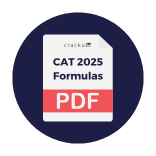Reading Comprehension:
The strength of the pharmaceutical industry is evident in the existence of 5,877 manufacturing units in India producing 20,000 formulations under 8,000 branded names. This rosy picture of the pharmaceutical industry however is reflected neither in availability of drugs for important public health problems nor in the affordability of drugs for domestic users. The innumerable formulationsproduced, packaged and sold by pharmaceutical companies do not reflect the seriousness of important public health requirements in India. Take for example, formulations to treat iron deficiency anemia, a highly prevalent public health problem affecting the majority of adolescent girls and pregnant women. If we examine the iron preparations that are in the 300 top selling drugs in India, none of them is the simple iron sulphate and folic acid tablet that the National List of
Essential Medicines (NLEM) recommends. In addition, a course of drugs to treat this ailment could cost a wage laborer up to two months wages.
There are over 20,000 drug formulations in India. Their prices are poorly regulated, if at all. There is wide variation between the minimum and maximum cost of drugs for a range of medicinal classes. Among commonly used drugs in clinical practice, such as antibiotics, anti-hypertensives and diabetic drugs, prices often vary from 2 to 20 times between the minimum and maximum price bands. Drugs for conditions like cancer, rheumatological diseases and erectile dysfunction have a 20-fold price variation across brands. The pharmaceutical sector is the only one in India (and probably in the world) where government tender procurement prices are 1 to 3 per cent of the retail market prices! This if anything indicates the level of overpricing at the retail level. An example: a drug company bids to supply albendazole 400 mg tablets, a medicine for worms, to the Tamil Nadu government at a mere 35 paise per tablet, while brands of this drug sell for Rs.16 in the open market. Thus, while the markets have been profitable for the pharmaceutical industry, they have been disastrous for the end-users who are hit both by the disease and the unaffordable medications that they are made to buy.
We may infer therefore that the cost of branded medications (or branded generics) is several times the cost of the unbranded generics of the same drug. For drug companies, the only criterion seems to be - both logically and internationally - to sell at what the market can take, and this means at the perceived (not the same as real, scientific) value of the drug. Further in India, the same drug is sold at vastly different prices by equally reputed companies and often by the same company.
What is the main argument extended by the author in the passage given above?
Solution
In the passage, the author notes a significant disparity in prices within the pharmaceutical industry. There is little to no regulation for the prices, and this has led to the companies making enormous profits. The author also exclaims that while these profits are good for the companies, it harms the end-users.
Options A and D can be dismissed as the health requirements are met, but are unaffordable.
Option B is a suggestion that is not even present in the passage and can easily be eliminated.
Hence, the answer is option C.
Create a FREE account and get:
- Download Maths Shortcuts PDF
- Get 300+ previous papers with solutions PDF
- 500+ Online Tests for Free

